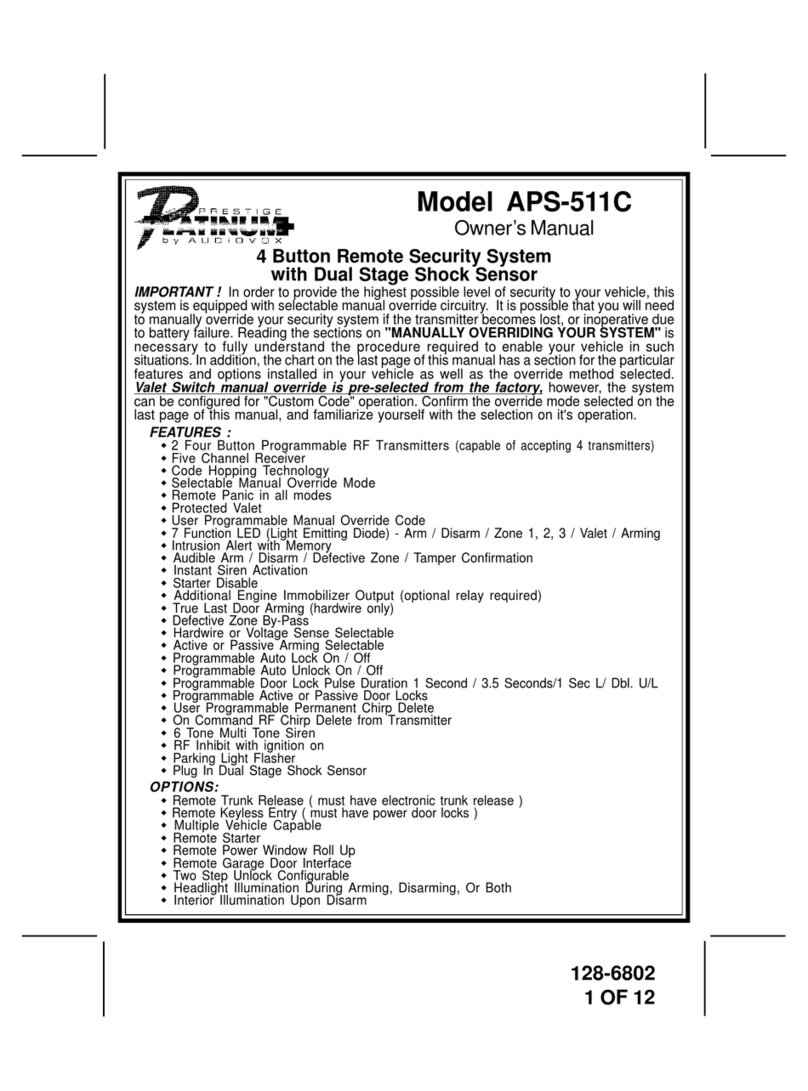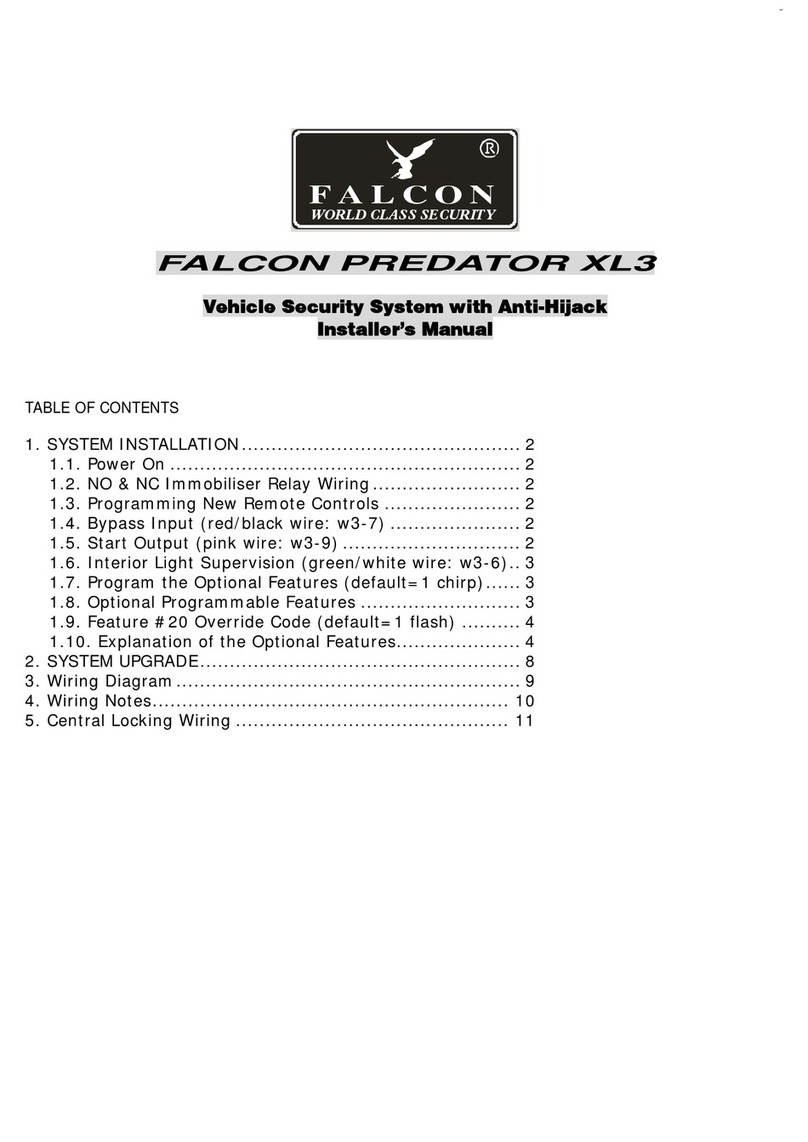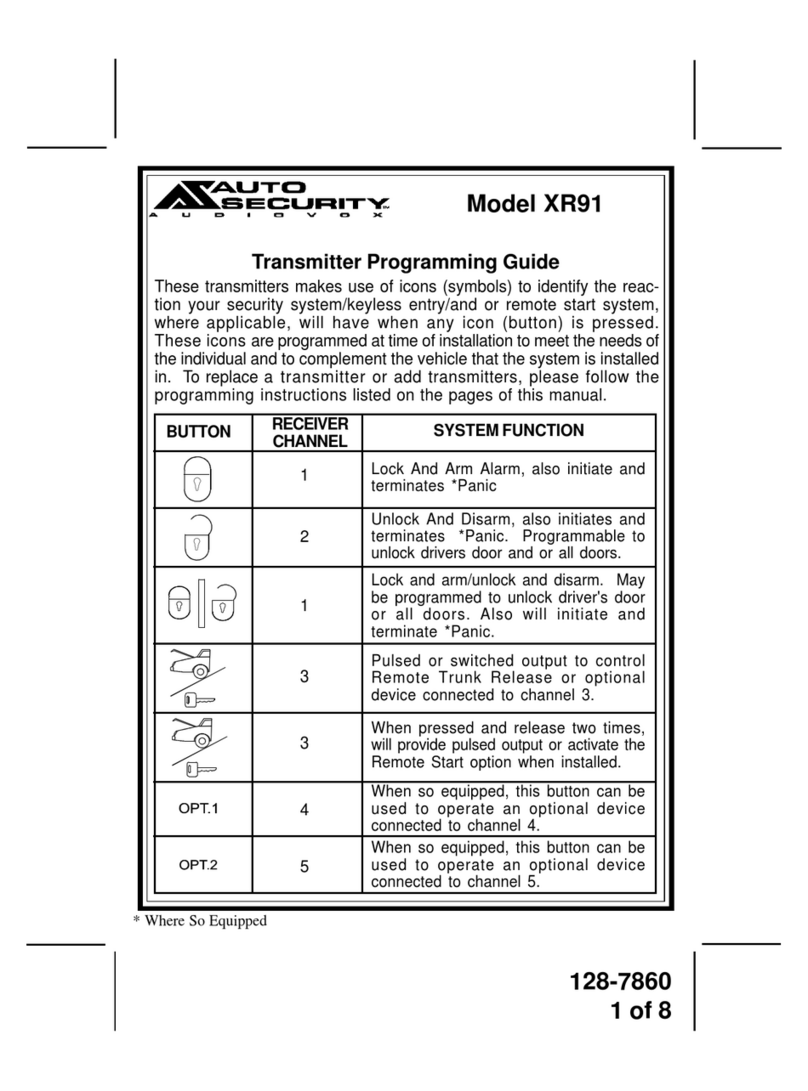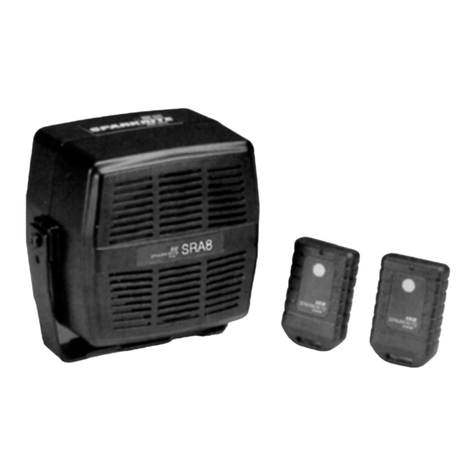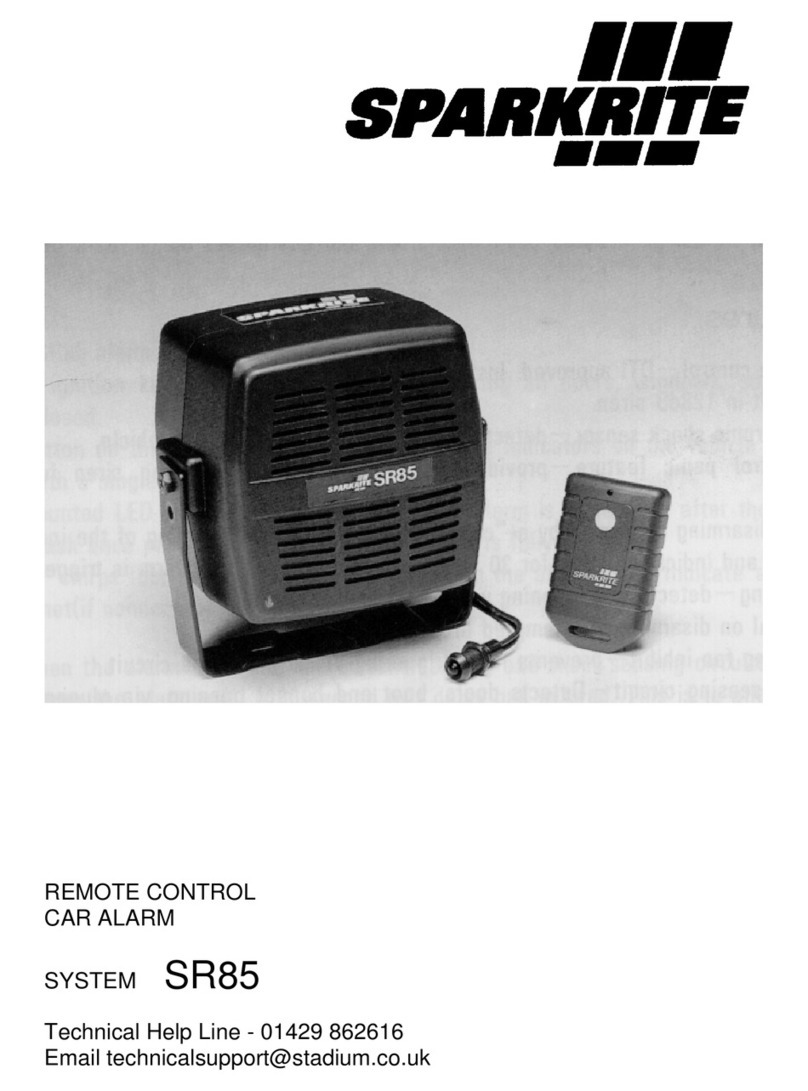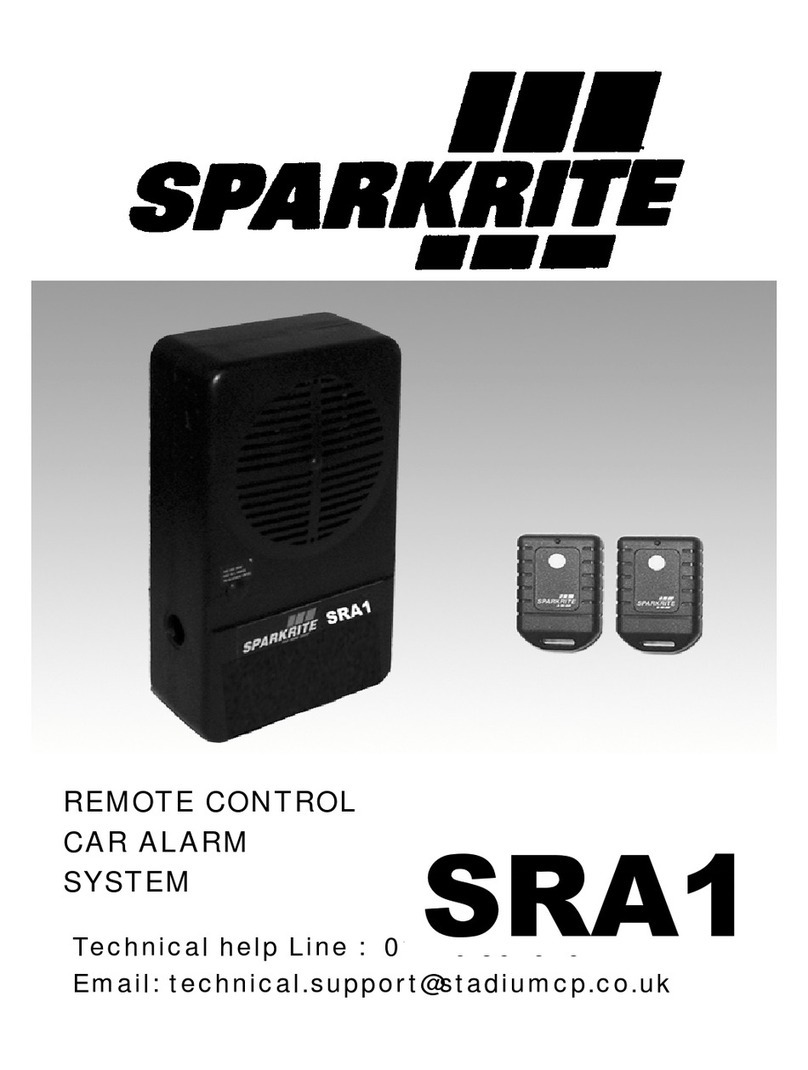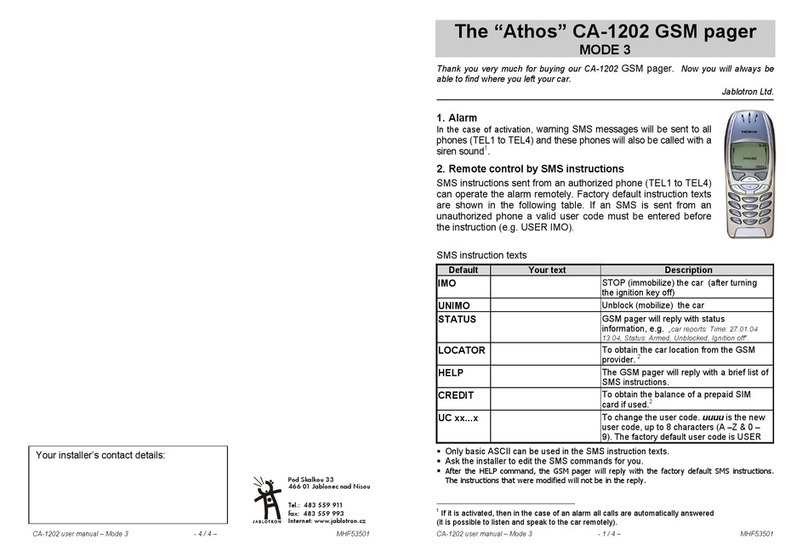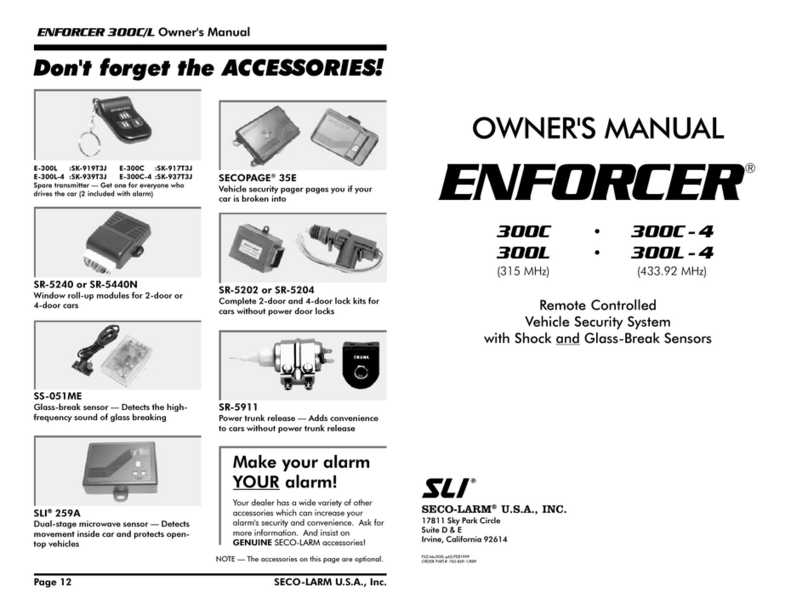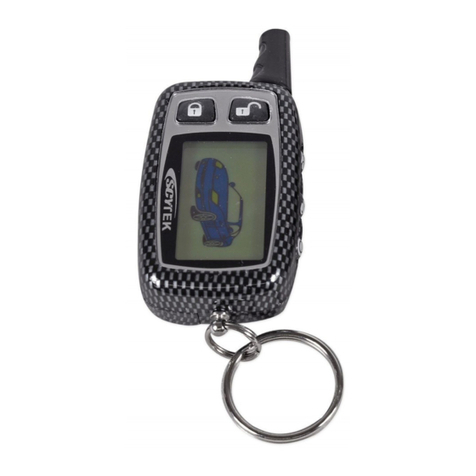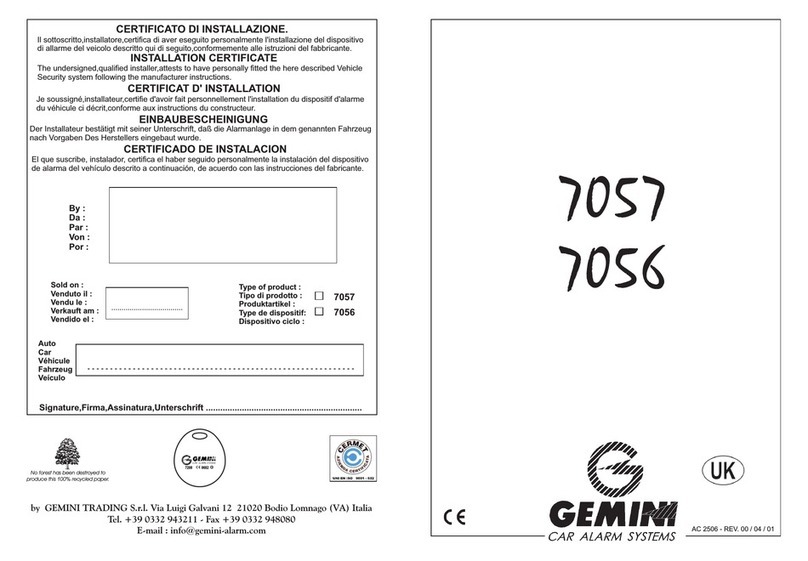
3
REMOTE CONTROL RADIO TRANSMITTER
The radio transmitter conforms to DTI legislation with each alarm allocated a
unique security code. Additional transmitters are available on special order
from your nearest stockist, or direct from Sparkrite using the enclosed order
form, quoting your serial number on the back of the remote control.
ARMING
To arm the SR90 alarm, proceed as follows:
Remove the ignition key and leave the vehicle ensuring all doors, windows,
sunroof, boot and bonnet are closed.
Press the button on the remote control transmitter once. The indicators on the
vehicle will flash once, coinciding with a single chirp (if selected) from the
siren, and the dashboard LED will also flash (following the 20 second arming
delay), at approximately one second intervals to show that the system is
armed.
If passive arming is selected, the SR90 will arm automatically following
closure of the last door (see arming control).
DISARMING
To disarm the alarm, press the transmitter button once, the indicators will flash
three times, coinciding with two chirps (if selected) from the siren. Check that
the dashboard LED has stopped flashing and unlock the vehicle as normal.
If you trigger the alarm accidentally, follow the normal disarming procedure
but keep the control button depressed until the alarm stops.
Note: When the alarm is armed, the current sensing and ultrasonic circuits
(optional) will not trigger the alarm until a 30 second exit delay has expired.
This is to allow movement inside the vehicle and in some cases, courtesy light
delays to cease.
REMOTE PANIC
If the transmitter button is pressed and held for three seconds, the SR90 will
trigger and commence an alarm cycle as a possible means of summoning
help, a very useful defense in case of attack or assault.

